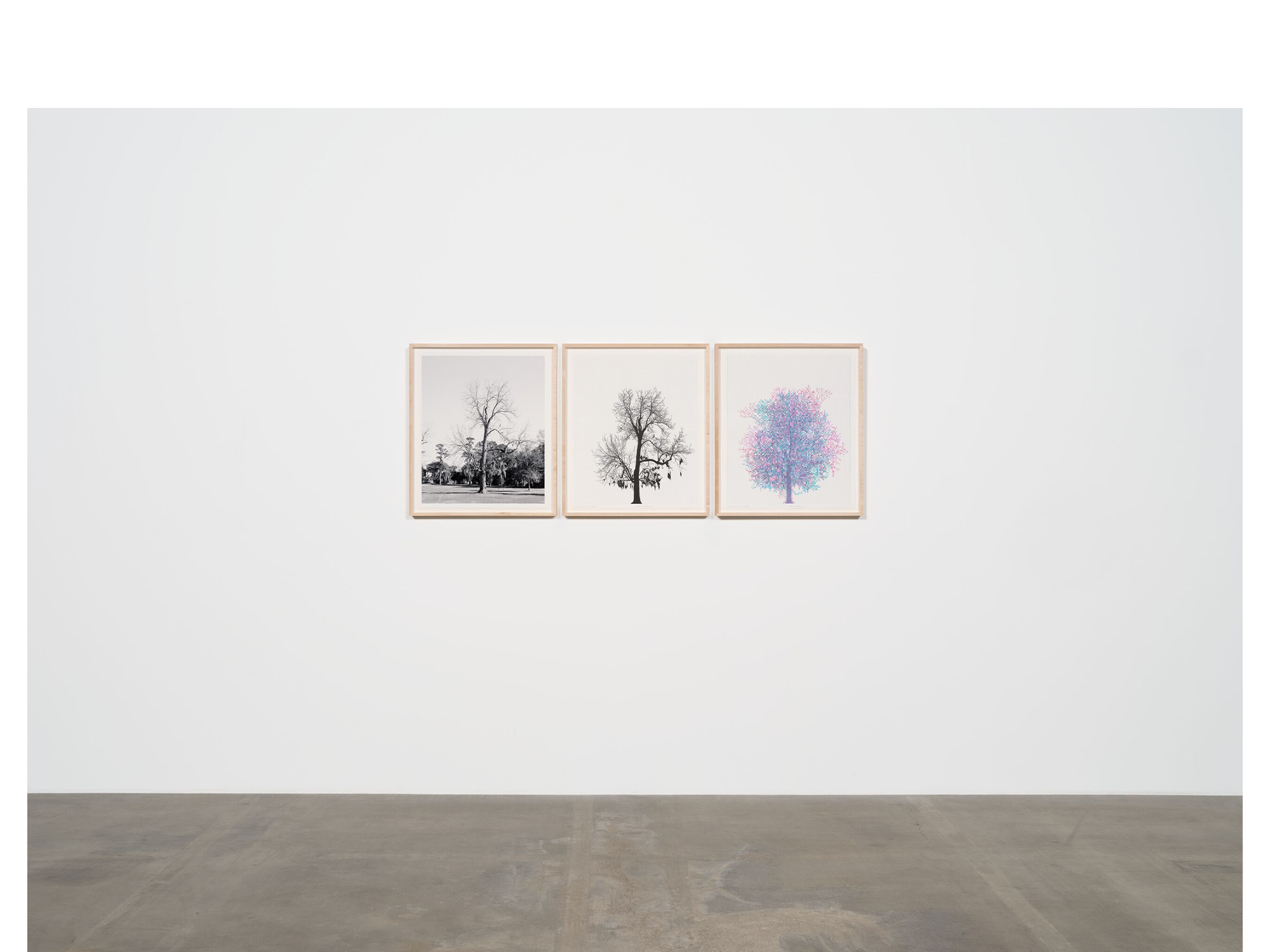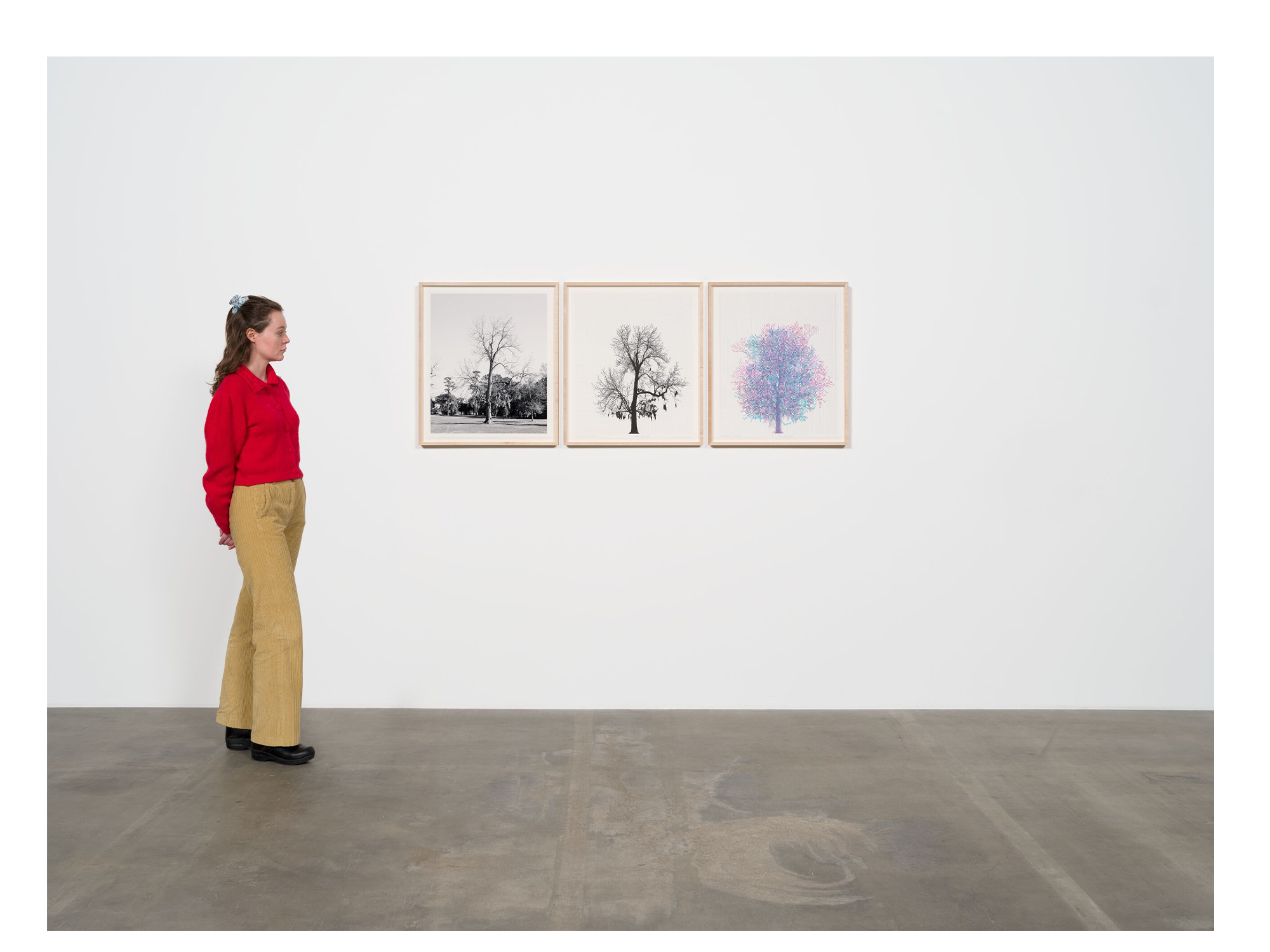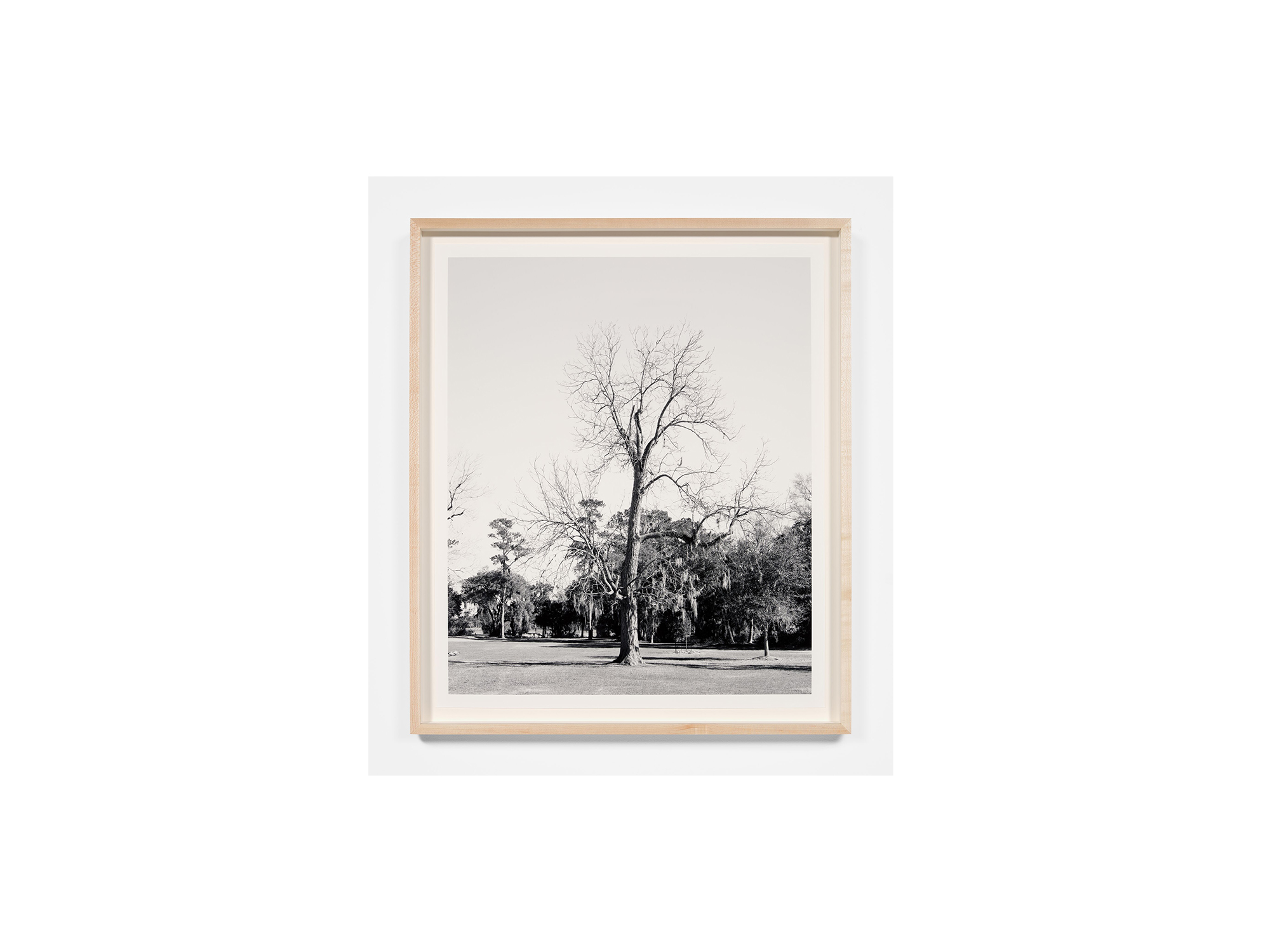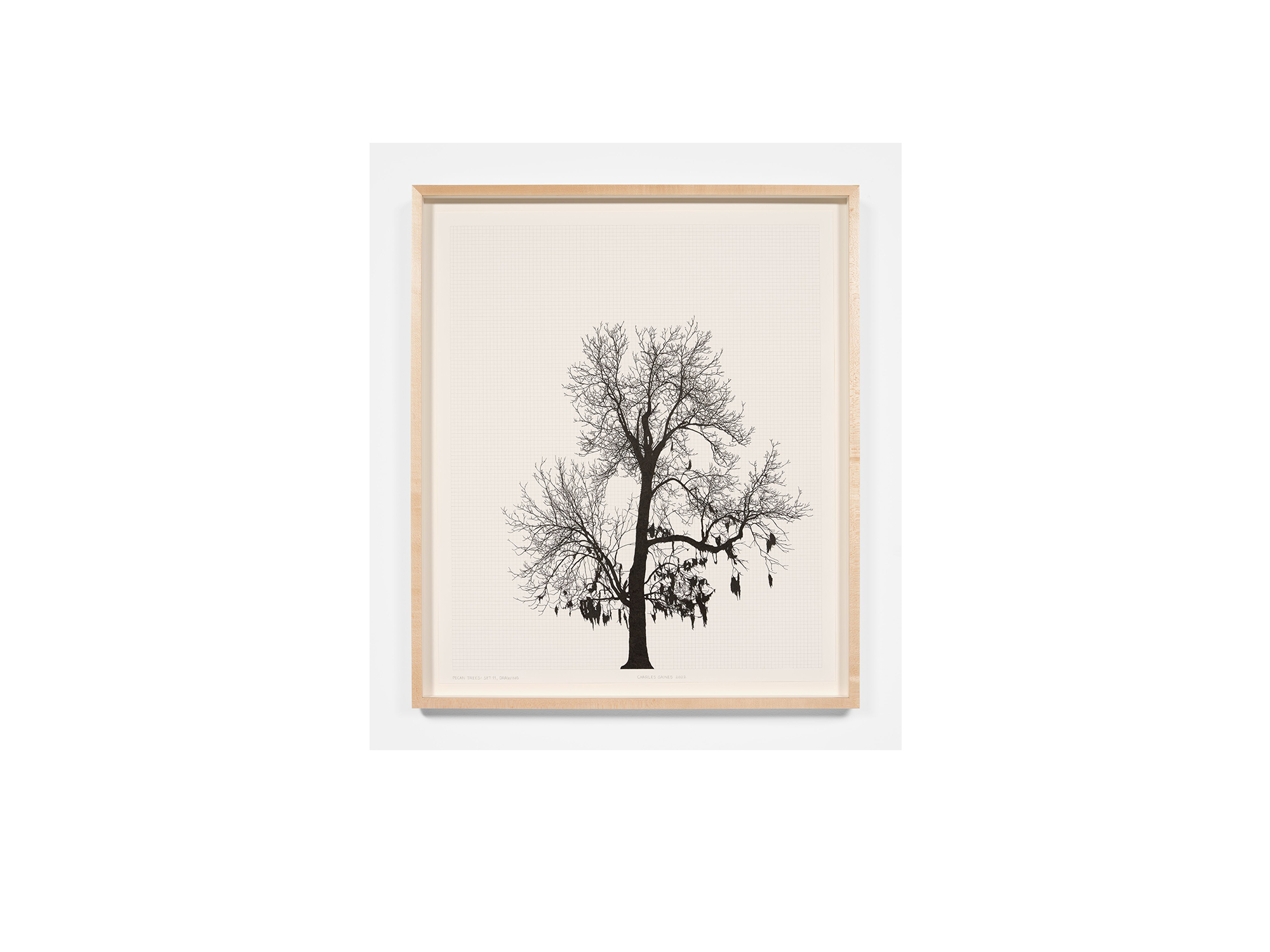Charles Gaines
Pecan Trees: Set 11
Pecan Trees: Set 11
$150,000
Charles Gaines
Pecan Trees: Set 11
2022
Photograph, watercolor, ink on paper, 3 sheets
Unique
70.8 x 187 x 5.1 cm / 27 7/8 x 73 ⅝ x 2 in
Overall: 70.8 x 187 x 5.1 cm / 27 ⅞ x 73 ⅝ x 2 in

Charles Gaines’ ‘Pecan Trees: Set 11’ (2022) is an outstanding example of the artist’s mastery of a complex arrangement of systems — sequencing, plotting, and numbered grids — as well as his longstanding depiction of trees, a defining motif of his oeuvre. In his newest series, ‘Pecan Trees,’ Gaines draws from several pecan trees he photographed on a visit to Boone Hall Plantation in Charleston County, South Carolina — not far from where the artist was born.
Gaines’s ‘Pecan Trees’ follow a similar pattern to his acclaimed ‘Walnut Tree Orchard’ works from the 1970s. ‘Pecan Trees: Set 11’ pairs a striking black and white photograph of a pecan tree with two drawings derived from the image: in one, the outline of the tree is filled in with solid ink while in the other, vibrant watercolors are used to plot all of the trees included in the series up to that point, layering tree upon tree as the series builds.

‘If you look at the entirety of my work, you’ll see that its main focus is on certain paradoxes in the process of perception. I, of course, would make the claim that these paradoxes are part and parcel of perception. There’s something that happens in perception that’s masked by this ‘subjectivity’ label. So the paradoxes that happen in perception become, according to the old paradigm, expressions of subjectivity.’—Charles Gaines [1]

Created through carefully considered systems rather than through the artist’s own imagination or intuition, these new works remove the artist’s subjectivity by following a set of self-determined rules and procedures. The works call into question both the objective nature of the trees and the subjective natural and material human actions that surround them.
The fastidious layering process allows Gaines to reveal the differences between the trees’ shapes where the forms do not align. These differences, highlighted by the artist’s systems, suggest the arbitrary nature of other manufactured systems in our society––such as political, gendered, racial, and class structures.


‘As I watch the systems and works evolve, and images being produced, I’m totally reminded that what I’m seeing is not a product of my intention but is a product of a system, and the system has a completely arbitrary relationship with the object.’—Charles Gaines [2]
About the artist
 A pivotal figure in the field of Conceptual Art, Charles Gaines’ body of work engages formulas and systems that interrogate relationships between the objective and the subjective realms. Using a generative approach to create series of works in a variety of mediums, he has built a bridge between the early conceptual artists of the 1960s and 1970s and subsequent generations of artists pushing the limits of conceptualism today.
A pivotal figure in the field of Conceptual Art, Charles Gaines’ body of work engages formulas and systems that interrogate relationships between the objective and the subjective realms. Using a generative approach to create series of works in a variety of mediums, he has built a bridge between the early conceptual artists of the 1960s and 1970s and subsequent generations of artists pushing the limits of conceptualism today.




